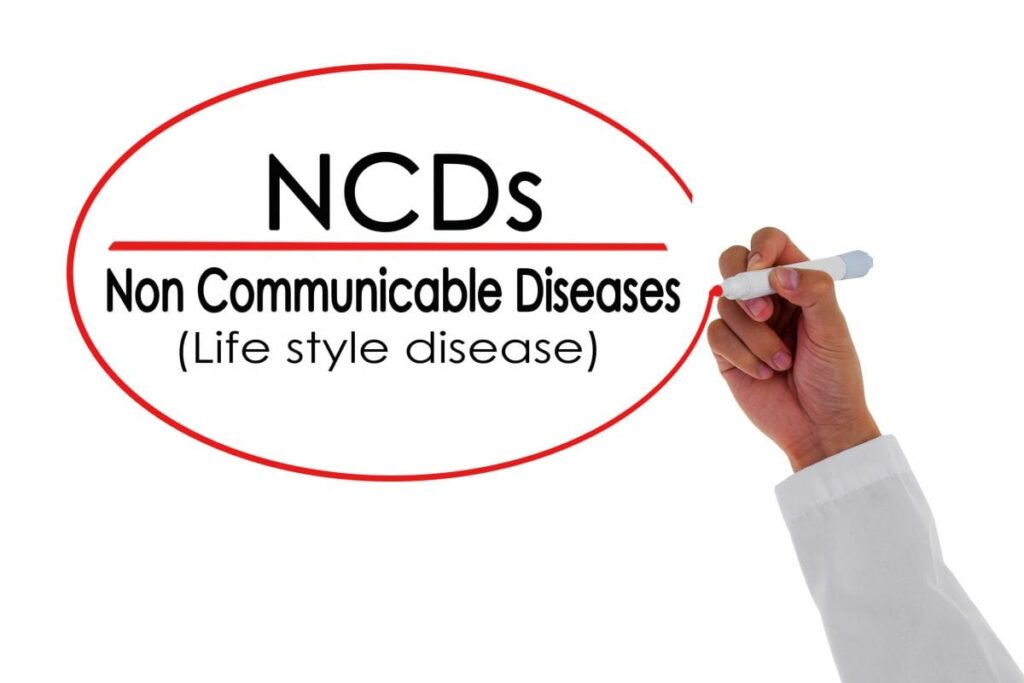Every two seconds, a person under the age of seventy dies of a noncommunicable disease (NCD) according to a new World Health Organization (WHO) report: “Invisible numbers – the true scale of non-communicable diseases”.

The report analysed pre-COVID-19 data from 2019 and found that seventeen million deaths resulting from NCDs occurred across the globe, with 86 percent of these deaths occurring in low- and middle-income countries. This amounts to a total of one in three deaths globally.
Dr Srinath Reddy, President of the Public Health Foundation of India, told The Indian Express that fifteen years ago, he had described NCDs as a public health emergency in slow motion. “That threat has grown since then, as NCDs affect all countries, all genders, all social classes and all stages of life. Even in the COVID-19 pandemic, severe morbidity and high mortality were associated with prior affliction with NCDs. We need a concerted global response, which uses policy instruments that have a population-wide impact on tobacco, alcohol, unhealthy foods and air pollution,” Dr Reddy said.
The WHO states that the issue of NCDs, and the major shift in public health from predominantly being concerned with infectious diseases, to a dual burden of NCDs and infectious disease has largely gone unnoticed. Health experts are calling for NCDs to be afforded far higher priority than they are currently granted.
Many countries, in the wake of COVID-19 have placed NCDs, and even other infectious diseases as low priority issues often as a matter of necessity in order to deal with overwhelmed health systems resulting from COVID-19 cases. However, to view NCDs and infectious diseases in isolation will cause far more issues should another outbreak or pandemic occur.
A large proportion of the deaths from COVID-19 occurred in those who had comorbidities. Those with prior conditions such as heart disease, or diabetes were far more likely to have severe symptoms of infection, and so, a far higher chance of dying. Failure to address NCDs will resultantly leave a population far more vulnerable to severe outcomes from infectious diseases.
India is no stranger to the issues of dealing with a dual burden of disease. NCDs in the country have surged to become the most common cause of death, totalling 66 percent of all deaths in the country.
According to research conducted in 2019, over the last 25 years, India has seen a fifty percent rise in heart disease cases. This most recent data from the WHO would suggest that this rise continues to be just as dramatic. Heart disease accounted for 28.1 percent of all deaths in India in 2016, the data from 2019 indicates that of 6,046,000 overall NCD deaths, 2,566,000 were a result of cardiovascular conditions, or around 42 percent. Of the overall deaths in the country from all sources, heart disease continues to persist at 28 percent.
While this rise over the last few decades may be partially attributed to reporting mechanisms, it is clear that an increased prevalence of risk factors is playing a significant role in the increase in both heart disease, and other NCDs.
As previously mentioned by Health Issues India, “much of the country is now adopting a lifestyle much more closely related to that of Western nations than that of rural India, creating a disparity in the health issues faced depending on geographic region. In the cities, sedentary lifestyles and occupation — coupled with a diet in which high-calorie, low-nutrient foods are common — are creating a situation in which noncommunicable diseases (NCDs) such as heart disease and cancer are common thanks to a proliferation of risk factors such as obesity.”
Other NCDs also claimed a sizable death toll. 1,146,000 deaths were caused by chronic respiratory diseases, 920,000 deaths were attributed to cancer, and 349,000 resulted from diabetes.
Given the considerable numbers of deaths resulting from NCDs, reallocation of resources to address this growing threat, in both India, as well as across much of the globe, is essential. “If every country were to adopt the interventions that are known to work, at least 39 million deaths could be averted by 2030, and countless other lives would be longer, healthier and happier,” according to the report.

